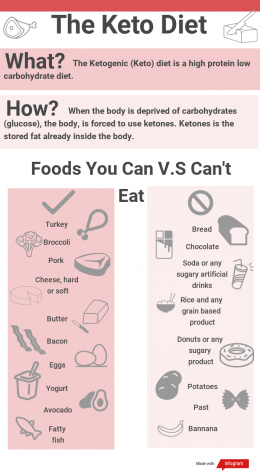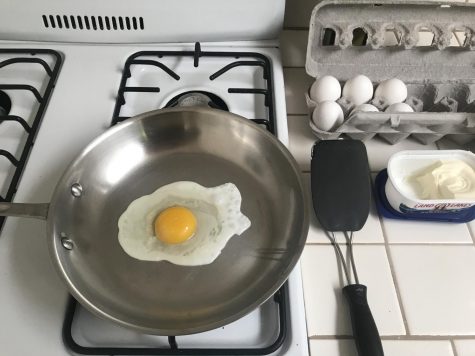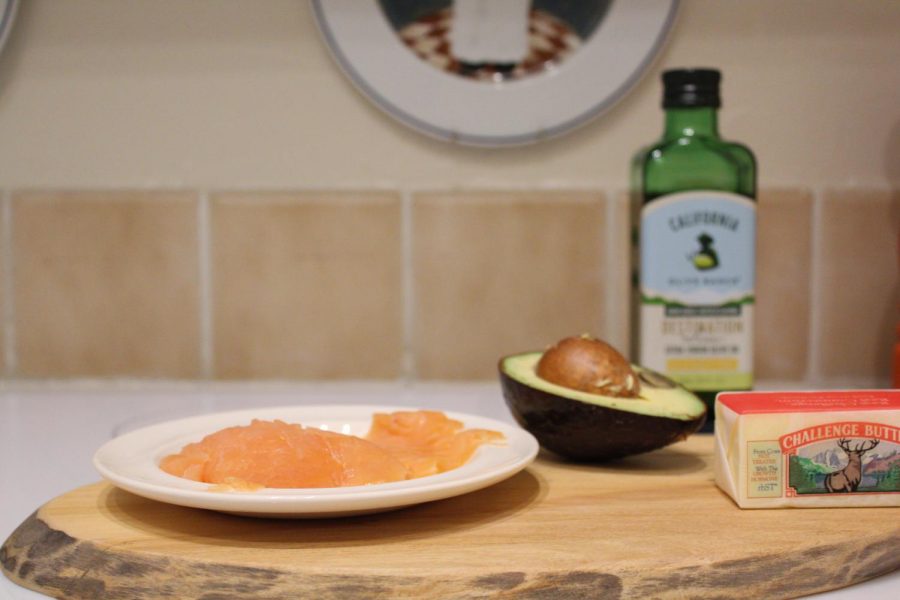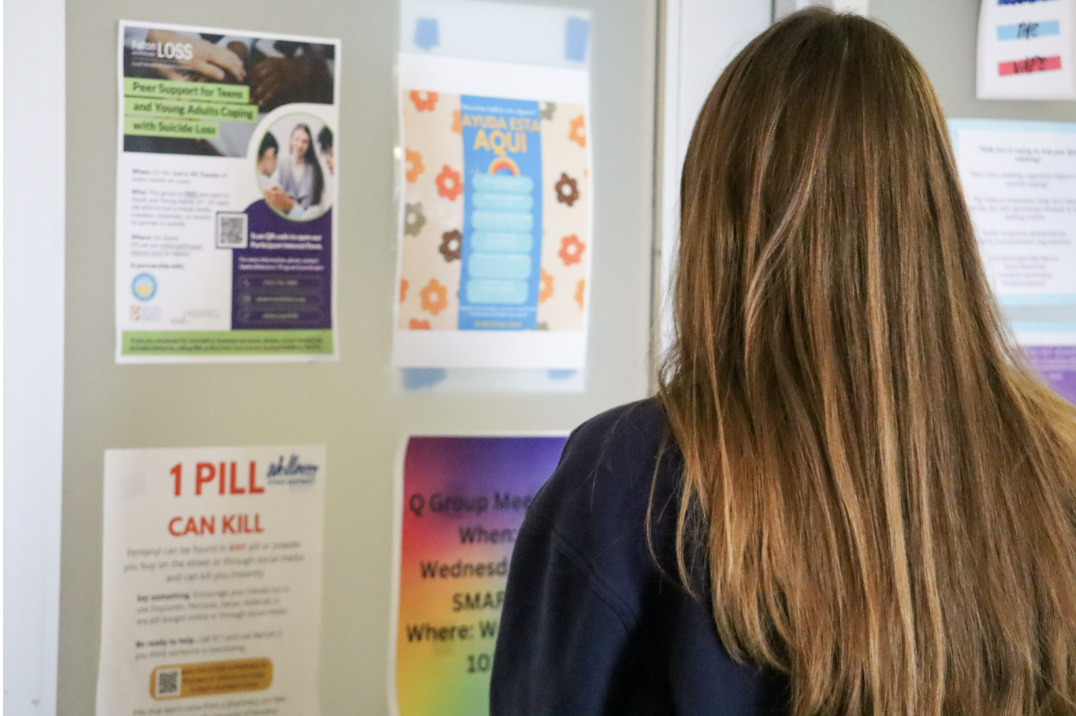The Keto diet: high protein, high fat and high pain
A few examples of food that are Keto; salmon, almonds, avocado, butter and olive oil.
February 9, 2019
Embarking on a diet was like running a marathon. I was enthusiastic in the beginning, but eventually gave up in the end, running out of steam to finish. This month I challenged myself to try the Keto diet: a high-protein and high-fat regime which cuts out almost all carbohydrates. As I researched the diet, I realized that the most advertised effects of the Keto diet were benefits in health, performance and weight loss. The concept of the Keto diet seemed intense but definitely worth trying, so I took a chance and said, “Why not?”
The Keto diet is named after a reaction that the body produces when it is deprived of carbohydrates, causing it to enter a metabolic state called ketosis. Once there is no more blood sugar circulating from carbohydrates, our bodies resort to breaking down the stored fat we already have into ketone bodies (a compound produced during the metabolism of fats). Because of its fast weight loss results since it burns pre-existing fat it is has been a popular topic in the media recently. Because of this, the diet has been reported to be one of the fastest weight loss diets and according to HealthLine, it is superior to a high-carb diet as it provides a metabolic advantage.
The Keto diet seemed simple at first, although the extensive amount of meat and fat consumption sounded undesirable and I knew that it was not sustainable in the long run because of how restrictive it was for my lifestyle. No pasta? I mean, come on!
When planning my meals, I checked out various online lists with the suggested Keto foods and meals (like this list) and wrote down everything that sounded appealing to me. Planning meals was a key part of embarking on this diet so I wouldn’t fall off track due to lack of Keto food in my fridge. For breakfast, I stuck to four foods: coffee, bacon, eggs and sausage. For lunch and dinner, I typically ate ham, chicken, turkey, steak or any other red meat. Along with the meats was a substantial amount of cheese, which also made for a great snack. Butter, cream and healthy oils were allowed, though without bread to pair them with, they seemed pointless. Nuts and seeds also proved to be a sufficient snack packed with protein, ideal for someone on the Keto diet.

Keto Inforgraphic
The first three days of the diet were the hardest and proved to be extremely challenging as I quickly realized how dependent I was on foods such as pasta, rice and bread. My meals became dramatically denser as I was swapping out carb-heavy foods for more meat and cheese. During those three days, I found myself initially grabbing for food filled with carbohydrates and then consciously swapping them out for a cheese stick or guacamole, a habit that I quickly developed and sustained.
While exercising, I felt myself getting tired faster for the first few days of the diet which was extremely inconvenient. After three days I felt myself finally in the Keto stage, my energy felt more stable and I felt more focused in class on the material, not food. I found I was not craving food as much or not just eating if I was board, and I didn’t feel very hungry when waking up in the morning as I usually do. For the time that I was on the diet, I felt more energized and clear headed than usual.

A perfect Keto snack, one egg fried with butter.
The worst parts of the diet were the beginning—due to the long assimilation time—and the end, when I tried to revert back to my old habits. Once I was finished with the diet, I indulged on a carbohydrate-filled muffin and felt sick to my stomach. When going off the Keto diet I would highly suggest leaning off of the fat and meat gradually and not just all at once as I did. Feeling sick from eating just this muffin gave me a chance to realize that my body was no longer used to eating so many carbs at once and it urged me to try to stay away from them even off the diet.
With such a restrictive diet plan, I was forced to try new foods and, as a picky eater, I was far out of my comfort zone. Luckily, eating out was not challenging, as most of the restaurants I went to always had some sort of Keto option, a benefit of the Keto diet compared to other diets. For example, at breakfast, I could get an omelet but would have to skip the potatoes and toast. For dinner, I would get meatballs—pass on the spaghetti. Eating Keto at restaurants was doable for a few days, but later proved to be difficult because I was forced to start repeating meals when eating out.
As I pushed to continue the diet, I found myself getting extremely tired of the foods I did like. I began experimenting with different meals such as zucchini pasta, which was something I was not expecting to like at all, but despite the slimy texture, it turned out to be an exquisite dish. Similarly, bulletproof coffee (coffee with butter) proved to be an unlikely Keto food I would appreciate. However, when I was eating high-fat and high-protein food, the taste seemed significantly more bland compared to eating carbs. While eating all protein and fat, I felt particularly heavier because I was eating such solid food.
Although my experience with the diet was short-lived, I am glad I tried it because it allowed me to be more aware of my regular eating habits, try new foods and experience a different diet with my lifestyle. As for the future, I would highly consider attempting another diet in order to experiment more with my eating habits and their effects on me and see if all other diets are truly like running a marathon. Ultimately, I gained a deeper understanding and respect for the people who actually practice this diet regularly, while also discovering how dearly I need pasta and bread in my life.







